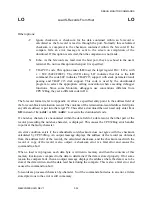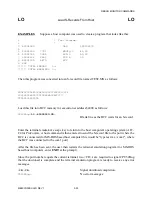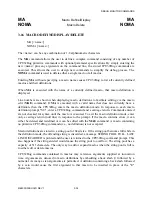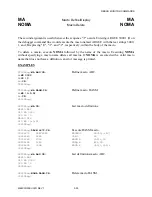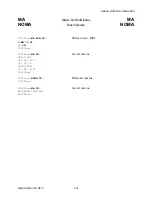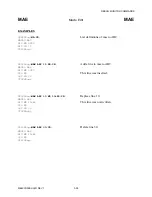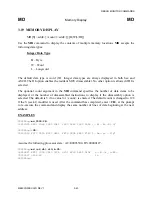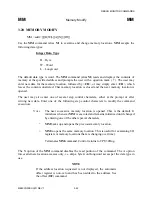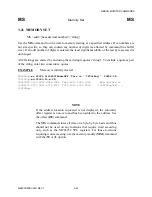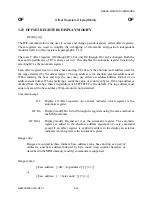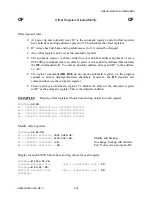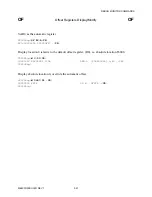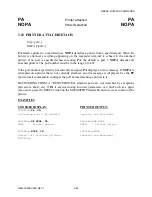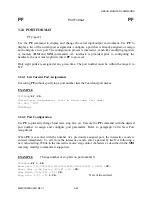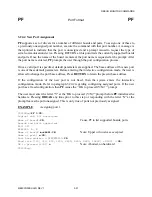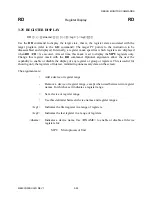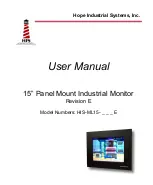
DEBUG MONITOR COMMANDS
M68CPU32BUG/D REV 1
3-45
OF
Offset Registers Display/Modify
OF
3.22 OFFSET REGISTERS DISPLAY/MODIFY
OF [Rn[;A]]
The OF command allows the user to access and change pseudo-registers called offset registers.
These registers are used to simplify the debugging of relocatable and position independent
modules (refer to offset registers in paragraph 2.1.1.3).
There are 8 offset registers (R0 through R7), but only R0 through R6 can be changed. Both the
base and top addresses of R7 is always set to 0. This disables the automatic register function by
selecting R7 as the automatic register.
Each offset register has two values: base and top. The base is the absolute least address used for
the range declared by the offset register. The top address is the absolute greatest address used.
When entering the base and top, the user may use either an address/address format or an
address/count format. When specifying a count the value of count is in bytes. If the top address is
omitted from the range, then a top address of $FFFFFFFF is the default. The top address must
equal or exceed the base address. Wrap-around is not permitted.
Command usage:
OF
Display all offset registers. An asterisk indicates which register is the
automatic register.
OF Rn
Display/modify Rn. Scroll through the registers using the same method as
the MM command.
OF Rn;A
Display/modify Rn and set it as the automatic register. The automatic
register is added to the absolute address argument of every command
except if an offset register is explicitly added. in the display an asterisk
indicates which register is the automatic register.
Range entry:
Ranges are entered in three formats; base address alone, base and top as a pair of
addresses, and base address followed by byte count. Step control characters as
described in the MM (memory modify) command are supported.
Range syntax:
[<base address> [<del> <top address>] ] [^|v|=|.]
or
[<base address> [ : <byte count> ] ] [^|v|=|.]


